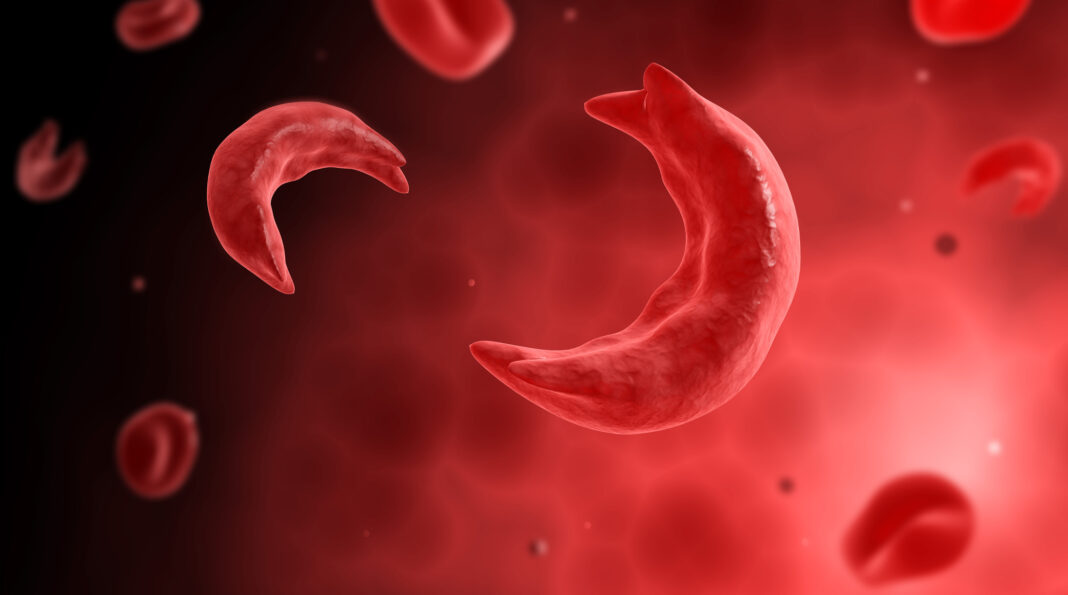Using a bespoke adenine base editor (ABE), researchers have corrected the sickle-cell disease (SCD) mutation in patient blood stem cells and in mice. According to the researchers, the ABE was highly efficient. Conversion of the pathogenic SCD allele (HBBS) to the naturally occurring, nonpathogenic allele (HBBG) was as high as 80%. The researchers also indicated that there were minimal instances of the editor causing undesired changes to hemoglobin.
The ABE, called ABE8e-NRCH, was developed in the Broad Institute laboratory of David R. Liu, PhD.
“We were able to correct the disease-causing variant without requiring double-stranded DNA breaks or inserting new segments of DNA into the genome,” Liu said. “This was a major team effort, and our hope is that base editing will provide a promising basis for a therapeutic strategy down the road for sickle cell disease.”
The team effort cited by Liu included scientists from St. Jude Children’s Research Hospital. Together, the Broad Institute and St. Jude scientists presented their findings in a paper (“Base editing of hematopoietic stem cells rescues sickle cell disease in mice”) that appeared June 2 in Nature.
“To assess phenotypic rescue, we edited hematopoietic stem and progenitor cells (HSPCs) from a mouse model of SCD in which endogenous β-globin genes are replaced by human HBBS, and transplanted the edited HSPCs into irradiated adult recipient mice,” the article’s authors wrote. “Primary and secondary transplantation of edited mouse HSPCs confirmed editing in long-term hematopoietic stem cells (HSCs) and restored hematological parameters to near-normal levels.”
These findings, the authors concluded, showed that autologous ex vivo base editing and transplantation of HSCs is a potential one-time treatment for SCD.
“Our study illustrates the power and excitement of multidisciplinary collaborations for creating novel mechanism-based cures for genetic diseases,” declared Mitchell J. Weiss, MD, PhD, a co-senior author of the article along with Liu, and chair of the St. Jude department of hematology. “In particular, we combined expertise in protein engineering, base editing, and red blood cell biology to create a novel approach for treating and possibly curing sickle cell disease.”
Currently, the only established method to cure SCD is a bone marrow transplant. While there are a number of gene editing treatments under development, these experimental therapies rely on introducing new DNA or cleaving genomic DNA in cells, which can also cause adverse effects.
In the current study, an alternative form of gene editing—the aforementioned ABE system—was used that can target a specific gene sequence and convert the DNA base pair A*T to G*C, altering a gene at the level of a single pair of nucleotides. The ABE system consists of a laboratory-evolved Cas9 variant—a CRISPR-associated protein that positions the base editor at the mutated HBB site in the genome—and a laboratory-evolved enzyme that converts the target A to a base that pairs like G. The base editor also guides the cell to repair the complementary DNA strand, completing the conversion of the target A*T base pair to G*C.
The single DNA mutation underlying SCD is an A in the healthy hemoglobin gene that has been altered to a T. While an ABE cannot reverse this change, it can convert that T to a C. This edit transforms the dangerous form of hemoglobin into a naturally occurring, nonpathogenic variant called “hemoglobin Makassar.”
The team first introduced the ABE into isolated blood stem cells from human SCD patients. In these experiments, up to 80% of the pathogenic hemoglobin variants were successfully edited into the benign Makassar variant, with minimal instances of the editor causing undesired changes to hemoglobin.
The researchers transferred these edited blood stem cells into a mouse model to observe how they functioned in live animals.
“After sixteen weeks, Makassar β-globin represented 79% of β-globin protein in blood, and hypoxia-induced sickling was reduced threefold,” the article’s authors detailed. “Mice that received base-edited HSPCs showed near-normal hematological parameters and reduced splenic pathology compared to mice that received unedited cells. Secondary transplantation of edited bone marrow confirmed that the gene editing was durable in long-term hematopoietic stem cells and showed that HBBS-to-HBBG editing of 20% or more is sufficient for phenotypic rescue.”
“In these final experimental phases,” Liu noted, “we demonstrated an editing threshold of about 20% that is necessary to mitigate this disease in mice. This base editing strategy is efficient enough to far exceed that benchmark. The approach offers promise as the basis of a potential one-time treatment, or perhaps even a one-time cure, for SCD.”
The researchers and other partners are working to move this concept safely and effectively into additional preclinical studies, with the eventual goal of reaching patients.


